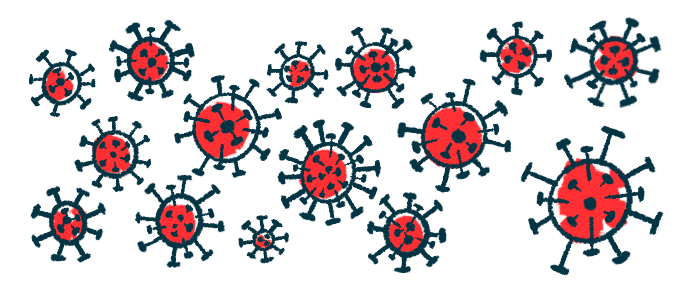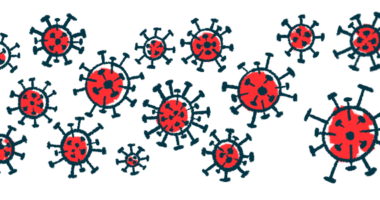Hepatitis C Raises Liver Cancer Risk in Men With Hemophilia, Study Says
Other risks include non-alcoholic fatty liver disease and co-existing conditions

Hepatitis C virus (HCV) infection remains a major risk factor for hepatocellular carcinoma — the most common type of liver cancer — in men with hemophilia, despite the wide availability of medications to fight the virus, a U.S. database analysis has found.
Other independent risk factors for the cancer include a liver condition called non-alcoholic steatohepatitis (NASH), and having a greater number of co-existing health conditions, or comorbidities.
These findings support the need for liver cancer surveillance and further research in this high-risk population, the researchers noted.
The analysis was published in the journal Haemophilia, in the study “Prevalence and risk factors for hepatocellular carcinoma in individuals with haemophilia in the era of direct-acting antiviral agents: A national inpatient sample study.”
What is hepatitis C?
Chronic HCV infection causes hepatitis C, a type of liver inflammation that can lead to cirrhosis (scarring of the liver) or cancer, such as hepatocellular carcinoma.
HCV infection is the leading cause of liver disease in men with hemophilia, a bleeding disorder caused by deficiencies in blood clotting factors. Before blood and blood-derived clotting factors were screened for the virus, nearly all patients with blood diseases were infected with hepatitis C during clotting factor infusions.
Direct-acting antivirals (DAAs) are oral medications used to treat HCV infection by targeting proteins that are vital to virus replication. However, there is little information on the rates of hepatocellular carcinoma in men diagnosed with hemophilia after direct-acting antivirals became available in 2014.
To address this, researchers at the University of Pittsburgh Medical Center in Pennsylvania retrospectively analyzed hospital discharge data from the National Inpatient Sample database, the largest inpatient healthcare database in the U.S., from 2016 to 2018.
Of more than seven million men discharged during that time, 3,730 had hemophilia. During this period, the frequency of HCV was 10 times higher among men with hemophilia (10.06%) than among men without the disorder (1.22%), and the rate of hepatocellular carcinoma was four times higher (1.07% vs. 0.27%).
The annual prevalence of HCV and hepatocellular carcinoma remained largely stable during the three-year period.
The higher rate of liver cancer among men with hemophilia may be related to “their longer duration HCV infection, due to early exposure to nonviral inactivated blood products in the first years of life,” the researchers wrote.
This likely results in greater rates of liver scarring “that may lead to HCC, despite effective antiviral therapy,” they added.
Among those with hepatocellular carcinoma, men with hemophilia were significantly younger (58.6 vs. 64.1 years), and had significantly higher rates of infection with the hepatitis B virus (11.11% vs. 4.50%) and HIV (human immunodeficiency virus, 8.33% vs. 1.64%) than men without hemophilia.
Men with hemophilia and liver cancer also received significantly more transfusions of platelets (11.11% vs. 3.24%) and clotting factors (19.44% vs. 4.72%), but were less likely to be alcoholic (11.11% vs. 33.25%) or to have high blood levels of fatty molecules (hyperlipidemia; 2.78% vs. 20.79%).
All the men with hepatocellular carcinoma in the study showed no significant differences in the rates of several of other evaluated factors, such as HCV infection, smoking, substance abuse, obesity, and several liver conditions such as NASH and end-stage liver disease.
After adjusting for various influencing factors, the independent risk factors for hepatocellular carcinoma among men with hemophilia included having NASH, HCV infection, and more comorbidities. Specifically, NASH increased the risk by about 21 times, HCV infection by nearly four-fold, and more comorbidities by 1.5 times.
How does HIV infection affect liver cancer risk?
In contrast, infection with HIV significantly lowered the risk of hepatocellular carcinoma by 98% and hyperlipidemia by 93%.
While these were also the main risk and protective factors among those without hemophilia, alcoholism was associated with a four times higher risk of the liver cancer in this population.
The cancer risk linked to NASH and more comorbidities was higher among men with hemophilia than in men without the disease, in whom HCV infection was linked to a higher risk.
Age, smoking, and transfusions were not risk factors for the cancer in either group.
“In contrast to past evidence that HIV promoted progression of HCV infection to end-stage liver disease … we found HIV was protective against [hepatocellular carcinoma] in both groups,” the team wrote.
“This likely reflects the effectiveness of antiretroviral therapy and lack of new HIV infection” in these groups, they added.
These findings highlight that “with the reduction in HCV by direct-acting antiviral agents (DAA), NASH is now the most important risk factor for HCC in hemophilic men, as previously shown in nonhemophilic men,” the researchers wrote, but “NASH is not as common as HCV.”
“HCV remains a major risk factor for HCC in hemophilic populations despite the wide availability of DAAs,” the researchers wrote.
These results also “confirm the need for continuing [hepatocellular carcinoma] surveillance and prospective study in this high-risk population,” the team concluded.








